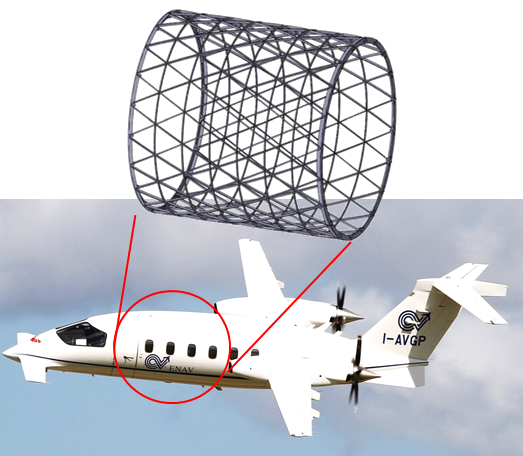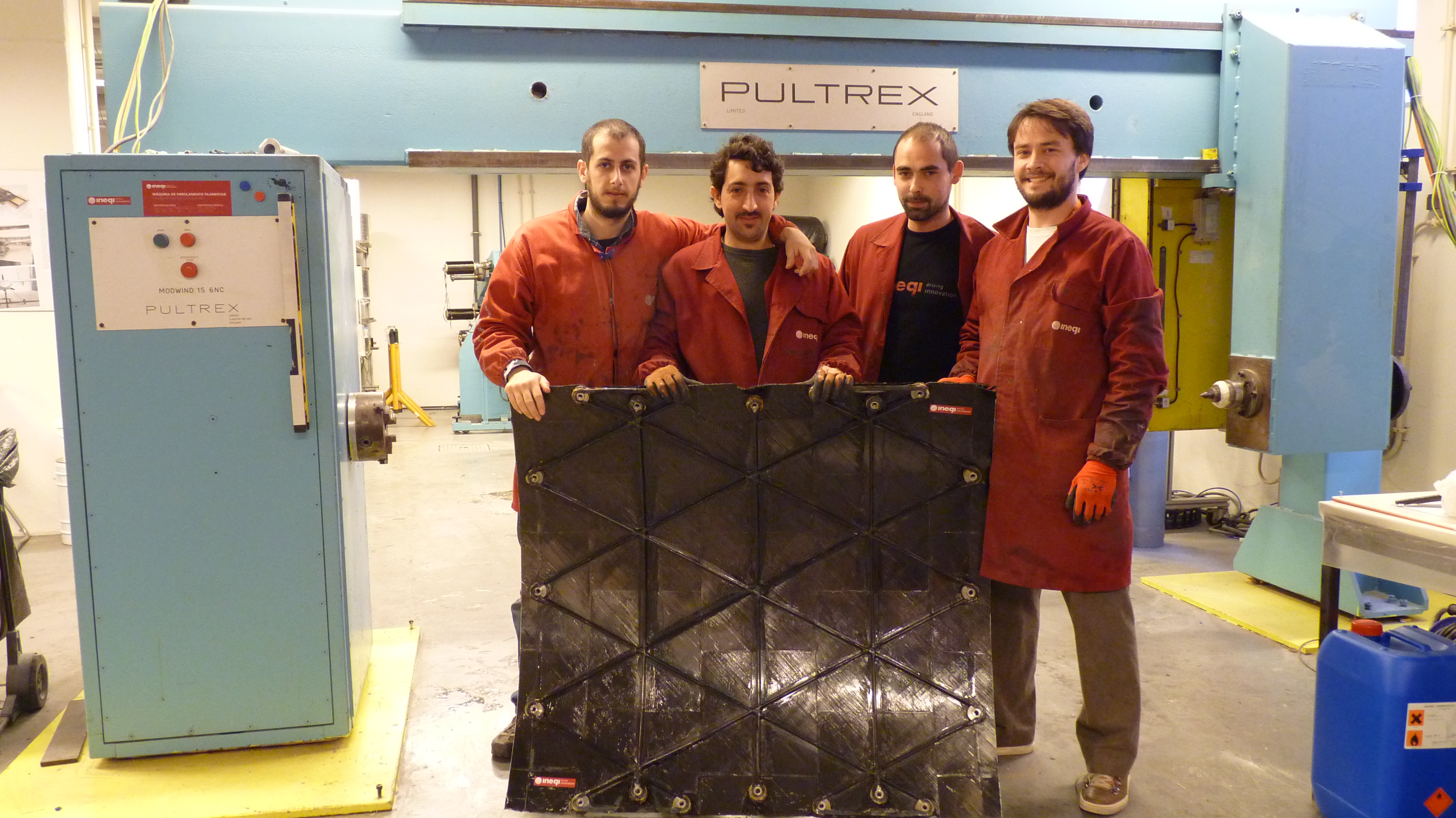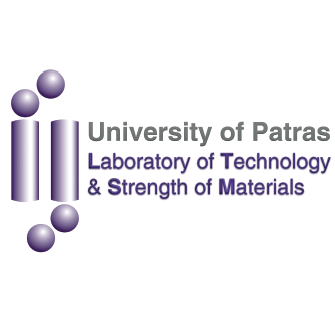4th EASN Workshop on Flight Physics and Aircraft Design, RWTH Aachen, October 27-29, 2014
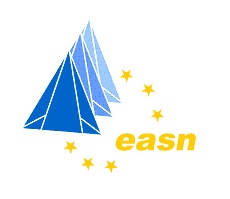 EASN invites you to its 4th of a series of specialized Workshops, this time in the fields of Flight Physics and Aircraft Design. The EASN workshop will be held on October 27-29, 2014 in Aachen, Germany in the premises of RWTH Aachen University. The workshop will be co-chaired by Prof. Eike Stumpf and Prof. Wolfgang Schröder. This year's workshop primarily aims to offer its participants a forum to meet and present among relative audience, the latest advancements in the areas of Flight Physics and Aircraft Design individually, as well as to foster the cooperation and interaction between them on a multidisciplinary basis. Additionally, it is expected to serve, like its predecessors, as a major dissemination event for running research projects and as a forum to exchange novel and innovative ideas for future research.
During this 3-day event, the General Assembly meeting of the EASN Association will also take place. Updated information about the workshop will be posted on a regular basis on the EASN website as well as at the 4th EASN International Workshop minisite.
EASN invites you to its 4th of a series of specialized Workshops, this time in the fields of Flight Physics and Aircraft Design. The EASN workshop will be held on October 27-29, 2014 in Aachen, Germany in the premises of RWTH Aachen University. The workshop will be co-chaired by Prof. Eike Stumpf and Prof. Wolfgang Schröder. This year's workshop primarily aims to offer its participants a forum to meet and present among relative audience, the latest advancements in the areas of Flight Physics and Aircraft Design individually, as well as to foster the cooperation and interaction between them on a multidisciplinary basis. Additionally, it is expected to serve, like its predecessors, as a major dissemination event for running research projects and as a forum to exchange novel and innovative ideas for future research.
During this 3-day event, the General Assembly meeting of the EASN Association will also take place. Updated information about the workshop will be posted on a regular basis on the EASN website as well as at the 4th EASN International Workshop minisite.
1st H2020 Aviation call
 Having implemented its usual proposal endorsement procedure, five EASN endorsed high quality proposals have been successfully submitted in the frame of the 1st H2020 "Mobility for Growth" call in Aviation. These are:
Having implemented its usual proposal endorsement procedure, five EASN endorsed high quality proposals have been successfully submitted in the frame of the 1st H2020 "Mobility for Growth" call in Aviation. These are:
1.DYNABOND: Dynamic response of adhesively bonded structures
2.ENHANCE: ENergy Harvesting in Aeroautic structures by multifunctional NanoCompositEs
3.THOR: Manufacturing of Engineered Metallic and composites structures using Powder and wire Hot Isostatic pressing
4.NEASAM: Nanofilled epoxy adhesive for structural aeronautic materials
5.INNCOST: Innovative surface treatment for novel aluminium and magnesium alloys
The newly implemented (in Aviation) 2-stage procedure and the simplified funding rules of H2020 are the two most noticeable differences compared to the well-known FP7 procedures. The Evaluation Summary Reports of the proposals not having been positively evaluated are expected to be made available to the coordinators within 3 months of the submission deadline, while at the same time successful proposers will be notified to proceed with preparing the full proposals to be submitted for the 2nd evaluation stage.
Clean Sky 2 - EASN Joint Workshop
 The CS2-EASN Joint Workshop on the Participation of Academia in Clean Sky 2 was successfully realized on Thursday, January 23rd, 2014 at the premises of Clean Sky JU in Brussels, Belgium. The workshop was attended by key personalities from both Clean Sky and EASN, and allowed room for a fruitful discussion on the future horizons of European Aeronautics and the role of academia in it.
Clean Sky representatives presented a brief overview of the goals set in Clean Sky 2, definitions for Core partners and requirements for applications. Academic representatives had the chance to express their questions and clarify the opportunities for their participation in Clean Sky 2 partner calls.
The CS2-EASN Joint Workshop on the Participation of Academia in Clean Sky 2 was successfully realized on Thursday, January 23rd, 2014 at the premises of Clean Sky JU in Brussels, Belgium. The workshop was attended by key personalities from both Clean Sky and EASN, and allowed room for a fruitful discussion on the future horizons of European Aeronautics and the role of academia in it.
Clean Sky representatives presented a brief overview of the goals set in Clean Sky 2, definitions for Core partners and requirements for applications. Academic representatives had the chance to express their questions and clarify the opportunities for their participation in Clean Sky 2 partner calls.
The most important conclusions that emerged from the Joint Workshop are the following:
- CS2 recognises the importance and appreciates the participation of Universities in its activities, both as core partners as well as in the frame of Calls for Proposals.
- CS2 is open to discuss with EASN on proposed measures towards facilitating the participation of Universities.
- The importance of including upstream research activities in the research agenda of Europe is mutually recognised. In principle, CS2 is not against including upstream activities to a limited extent, provided that the nature of the projects is not affected.
- EASN will be endorsing a limited number of Academia-led clusters, to respond to the CS2 calls for core partners.
The workshop material is available at the EASN website.
Continuing its active involvement in Clean Sky 2, EASN has initiated an internal Expression of Interest Campaign amongst its members to build a limited number of Clusters to respond to the Clean Sky 2 call for core partners. The target is to create a maximum of 5 to 6 Clusters based on the principle "excellent, multinational and preferably hybrid". The Clusters will be created on the base of specific expertise accumulated through persistent and successful presence in aeronautics research funded in the frame of the various FPs. The potential Clusters should prove expertise on topics which are specific but not too narrow (e.g. Aircraft Structures analysis with emphasis on Fuselage Structure, Hybrid Laminar Flow Control, Innovative Aircraft Configurations, Improval of Maintenance Operations etc).
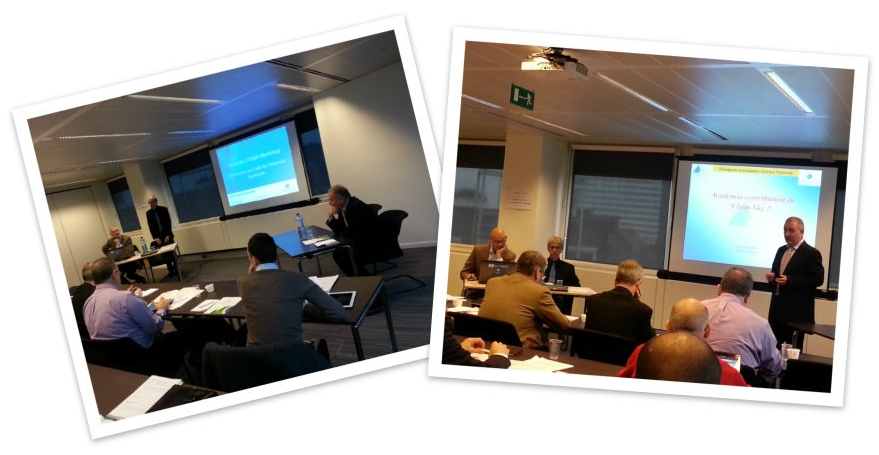
International Cooperation in Horizon2020
 In view of the envisaged 2015 call for collaborative research projects, jointly funded by the European Commission and International Partners (e.g. China, Japan, Russia, Canada), the European Aeronautics Science Network has been actively involved in expressing to the EC the collective European Academia interest in potential topics for International Collaboration. EASN representatives have also been involved in networking activities with IC partners, in order to provide EASN members with contacts of potential partners from all countries involved in the joint 2015 calls. Specific activities in the frame of an Expression of Interest call will be launched in due time.
In view of the envisaged 2015 call for collaborative research projects, jointly funded by the European Commission and International Partners (e.g. China, Japan, Russia, Canada), the European Aeronautics Science Network has been actively involved in expressing to the EC the collective European Academia interest in potential topics for International Collaboration. EASN representatives have also been involved in networking activities with IC partners, in order to provide EASN members with contacts of potential partners from all countries involved in the joint 2015 calls. Specific activities in the frame of an Expression of Interest call will be launched in due time.
AEAT issue devoted to the 2nd EASN workshop
 The special issue of the "Aircraft Engineering and Aerospace Technology" journal, devoted to the 2nd EASN workshop on Flight Physics and Aircraft Design has now been published. The issue (Volume 86, Issue 3) can be viewed online through the Emerald's Inshight service "Emerald EarlyCite"
The special issue of the "Aircraft Engineering and Aerospace Technology" journal, devoted to the 2nd EASN workshop on Flight Physics and Aircraft Design has now been published. The issue (Volume 86, Issue 3) can be viewed online through the Emerald's Inshight service "Emerald EarlyCite"
2014 ASD Annual Convention in Prague
 The 2014 ASD Annual Convention will take place in Prague, Czech Republic, from 23 to 25 April 2014. Spread over 3 days, the agenda of the Convention will be punctuated by three major topics. On the first day, the Young Professionals Forum will bring together young aerospace engineers at the very beginning of their careers with the aim of focusing on innovation in corporate environment. The second day of the Convention will be dedicated to a 4D Market Place and will cover all four of its elements, i.e. exhibition, technology presentations, networking and B2B meetings. On the third day, the Plenary Session will concentrate on keynote speeches delivered by high-level representatives from the Czech government, the EU institutions and industry.
The 2014 ASD Annual Convention will take place in Prague, Czech Republic, from 23 to 25 April 2014. Spread over 3 days, the agenda of the Convention will be punctuated by three major topics. On the first day, the Young Professionals Forum will bring together young aerospace engineers at the very beginning of their careers with the aim of focusing on innovation in corporate environment. The second day of the Convention will be dedicated to a 4D Market Place and will cover all four of its elements, i.e. exhibition, technology presentations, networking and B2B meetings. On the third day, the Plenary Session will concentrate on keynote speeches delivered by high-level representatives from the Czech government, the EU institutions and industry.
EASN will be represented in the Convention by its Vice Chairman, Prof. Zdobyslaw Goraj, who will participate in Knowledge Cafe no 2, third Panel of the Aerospace competitiveness debate. The later will take place on Thursday the 24th at 15:00 and will examine how to best integrate the capabilities of the supply chain and research establishments of the EU-28 into the programmes and projects of CS2 but also into those stemming from the Cooperative Research budget line within Horizon 2020. The discussion will be moderated by Prof. Rolf Henke, Member of the Executive Board, DLR. Apart from the EASN Vice Chairman, the list of speakers who will participate in this debate, include: Eric Dautriat, Executive Director, Clean Sky JU, Josef Kaspar, President ALV CR, President EREA, Manuela Soares, Director Transport, DG RTD, European Commission and Simon Weeks, Head of Aerospace Research & Technology, Rolls-Royce.
Interview of Mr. Jean-Louis Bonafé, former coordinator of the SCRATCH initiative for SMEs
 Mr. Jean-Louis Bonafé, a key personality on supporting aeronautics innovative research for SMEs in Europe, expresses his views on how SMEs can respond in their indispensable role in retaining global leadership for Europe in Aeronautics. Read the interview of Mr. Jean-Louis Bonafé on the EASN website
Mr. Jean-Louis Bonafé, a key personality on supporting aeronautics innovative research for SMEs in Europe, expresses his views on how SMEs can respond in their indispensable role in retaining global leadership for Europe in Aeronautics. Read the interview of Mr. Jean-Louis Bonafé on the EASN website
Workshop on "Education and Training Needs for Aviation Engineers and Researchers in Europe"
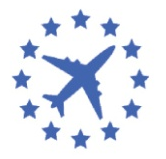 ACARE WG5 - Prioritising research, testing capabilities and education, together with the European Commission and the EU-funded action AirTN NextGen are organizing a workshop on "Education and Training Needs for Aviation Engineers and Researchers in Europe". The workshop will take place in Brussels on June 13th, 2014 and will mainly aim at tackling issues such as the skill needs and possible shortages of engineering workforce in the European Aviation sector, as well as at identifying ways to improve the quality of education and matching the workforce supply to the needs of the aviation sector. More information about the workshop will be posted on the EASN website upon availability.
ACARE WG5 - Prioritising research, testing capabilities and education, together with the European Commission and the EU-funded action AirTN NextGen are organizing a workshop on "Education and Training Needs for Aviation Engineers and Researchers in Europe". The workshop will take place in Brussels on June 13th, 2014 and will mainly aim at tackling issues such as the skill needs and possible shortages of engineering workforce in the European Aviation sector, as well as at identifying ways to improve the quality of education and matching the workforce supply to the needs of the aviation sector. More information about the workshop will be posted on the EASN website upon availability.

 Having completed the first half of the project the work has been mainly focused on the preparation of self-healing multifunctional nanocomposites, which contain finely dispersed functionalized nanofillers in a polymer matrix. Self-healing resins based on microencapsulated systems have been formulated and multifunctional materials able to overcome current limitations of aeronautic resins have been developed.In addition to this, the manufacturing aspects related to the processing of self-healing multifunctional materials into a real Carbon-fiber-reinforced polymer (CFRP) panel have been also studied. Furthermore, the modelling activities of the project have been initiated and a finite element model has been proposed in order to predict the electrical properties of carbon nano-filled epoxy matrix. Finally, the development of a numerical model based on the cohesive zone modeling method has been proposed for simulating crack growth in front of the capsule. For more information visit the
Having completed the first half of the project the work has been mainly focused on the preparation of self-healing multifunctional nanocomposites, which contain finely dispersed functionalized nanofillers in a polymer matrix. Self-healing resins based on microencapsulated systems have been formulated and multifunctional materials able to overcome current limitations of aeronautic resins have been developed.In addition to this, the manufacturing aspects related to the processing of self-healing multifunctional materials into a real Carbon-fiber-reinforced polymer (CFRP) panel have been also studied. Furthermore, the modelling activities of the project have been initiated and a finite element model has been proposed in order to predict the electrical properties of carbon nano-filled epoxy matrix. Finally, the development of a numerical model based on the cohesive zone modeling method has been proposed for simulating crack growth in front of the capsule. For more information visit the 
 The INMA project delivered means and methods to cold and hot form titanium by incremental forming. This was supported by process numerical models, a tool path correction algorithm and post-forming material data. The project comes in its final stage and the activity is focused on demonstration. A first version of the project demonstrator parts (engine and airframe components) has been produced. Both parts are now being tested and analyzed. Their geometric accuracy is being improved through support provided by the process numerical simulation and tool path correction utilities implemented during the project. A final flyer and a video that compile the main achievements of the project will be available soon. For more information visit the
The INMA project delivered means and methods to cold and hot form titanium by incremental forming. This was supported by process numerical models, a tool path correction algorithm and post-forming material data. The project comes in its final stage and the activity is focused on demonstration. A first version of the project demonstrator parts (engine and airframe components) has been produced. Both parts are now being tested and analyzed. Their geometric accuracy is being improved through support provided by the process numerical simulation and tool path correction utilities implemented during the project. A final flyer and a video that compile the main achievements of the project will be available soon. For more information visit the  ENCOMB will finish at the end of April 2014. The development and optimization of the extended NDT methods are completed and the remaining project month is dedicated to the final evaluation of the results. Several methods were successfully adapted for quantitative detection of different pre-bond surface contaminations down to critical threshold values. Also for detection of weak bonds due to pre-bond surface contaminations or poor curing a series of ENDT methods could be adapted. In conclusion, several of the ENCOMB developments have the potential to be used for pre- and post-bond quality assurance for adhesive bonding of composite aircraft structures.For more information visit the
ENCOMB will finish at the end of April 2014. The development and optimization of the extended NDT methods are completed and the remaining project month is dedicated to the final evaluation of the results. Several methods were successfully adapted for quantitative detection of different pre-bond surface contaminations down to critical threshold values. Also for detection of weak bonds due to pre-bond surface contaminations or poor curing a series of ENDT methods could be adapted. In conclusion, several of the ENCOMB developments have the potential to be used for pre- and post-bond quality assurance for adhesive bonding of composite aircraft structures.For more information visit the  CORSAIR's first step was to match the industrial needs of MRO divisions with the experimental plan for cold spray characteristics and capabilities. A collection of components listing properties of each part, its damage and required feature repairs has been assembled with inputs from the industrial partners. An initial list of materials of interest includes Al2024, Ti64, WE43 and powder materials are being prepared accordingly. Experiments will include adhesion and cohesion tests, static and fatigue characterization as well as plans regarding the electrochemical and corrosion resistance of materials. Next steps focus on the design of new nozzles and powder feeders for an innovative portable plant. For more information on the CORSAIR project, please visit the
CORSAIR's first step was to match the industrial needs of MRO divisions with the experimental plan for cold spray characteristics and capabilities. A collection of components listing properties of each part, its damage and required feature repairs has been assembled with inputs from the industrial partners. An initial list of materials of interest includes Al2024, Ti64, WE43 and powder materials are being prepared accordingly. Experiments will include adhesion and cohesion tests, static and fatigue characterization as well as plans regarding the electrochemical and corrosion resistance of materials. Next steps focus on the design of new nozzles and powder feeders for an innovative portable plant. For more information on the CORSAIR project, please visit the  In the first half year of the i-VISION project, all the activities are well on track having already achieved the internally set goals. Main aim is to support human factors design and validation activities in aircraft cockpits, during the early phases of the product life-cycle through knowledge-based immersive virtual reality technologies. The i-VISION work has been focused on defining the respective specifications for the i-VISION developments (Human-Cockpit Operations Analysis Module and Semantic Virtual Cockpit Module) based on aerospace industry requirements. The defined specifications will be structured and validated by the industry partners' needs, taking into account the universities' knowledge on structured human factors assessment methods. Major objective for the upcoming period is to define formats and interfaces that will allow a seamless transition of methodical toolsets into the virtual reality platform. For more information visit the
In the first half year of the i-VISION project, all the activities are well on track having already achieved the internally set goals. Main aim is to support human factors design and validation activities in aircraft cockpits, during the early phases of the product life-cycle through knowledge-based immersive virtual reality technologies. The i-VISION work has been focused on defining the respective specifications for the i-VISION developments (Human-Cockpit Operations Analysis Module and Semantic Virtual Cockpit Module) based on aerospace industry requirements. The defined specifications will be structured and validated by the industry partners' needs, taking into account the universities' knowledge on structured human factors assessment methods. Major objective for the upcoming period is to define formats and interfaces that will allow a seamless transition of methodical toolsets into the virtual reality platform. For more information visit the 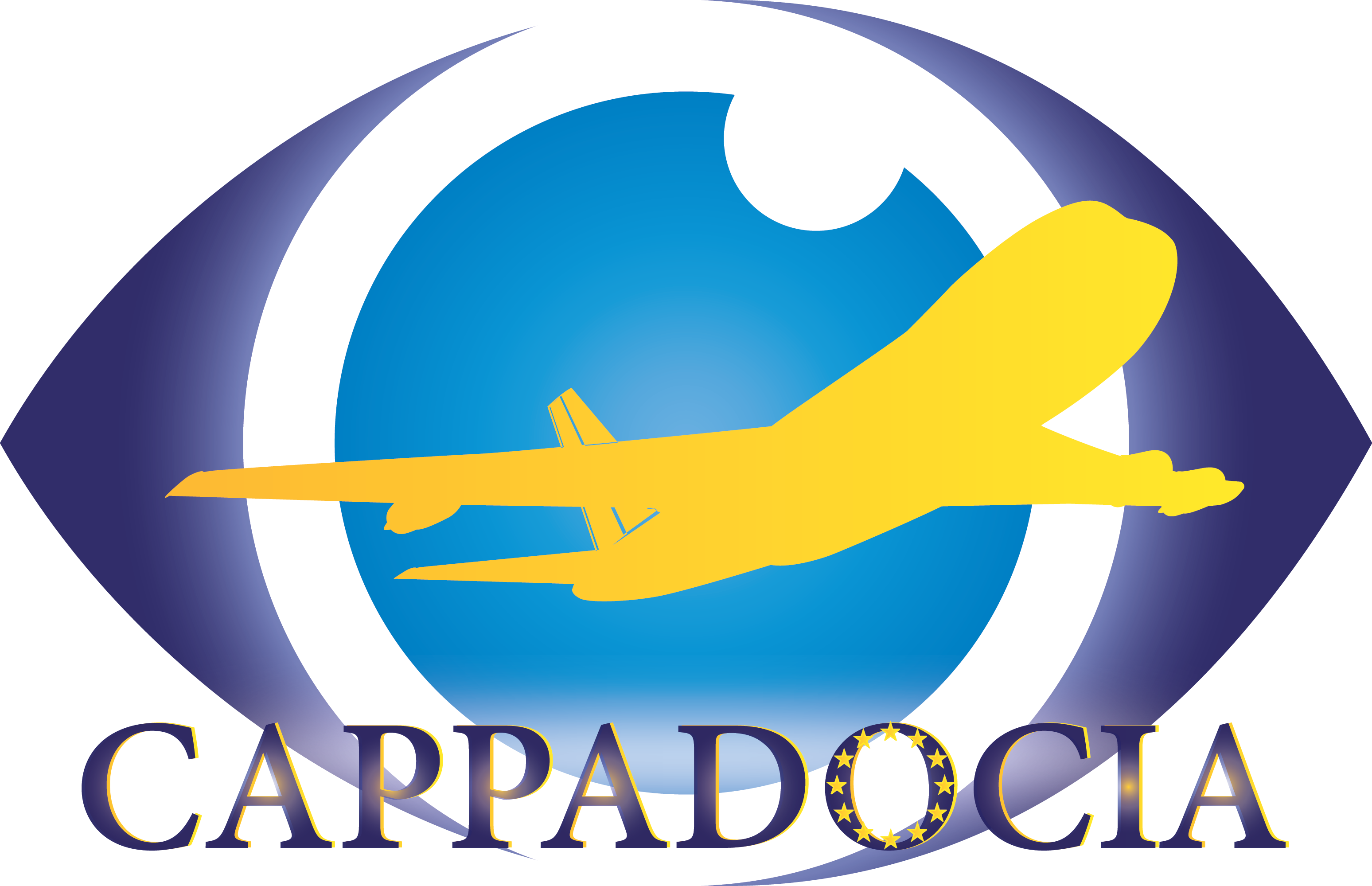 In the first half year of the CAPPADOCIA (Coordination Action Pro "Production, Avionics, Design" on Cost-efficiency in Aeronautics) project, its overall activities are running as initially foreseen in the project roadmap. The CAPPADOCIA external Advisory Board has been identified, gathering 13 European industrial and research organisations' representatives. A specific methodological approach has also been defined to carry out the state-of-the-art and assess the impact of cost-efficiency on the targeted research topics (Design system and tools, Production, Avionics). Relevant EC-funded projects and related SRIA enablers have been identified and will now be considered to achieve the expected assessment. To do so, those Projects' Coordinators have been approached and first level information has been collected. Strategic recommendations will be made in accordance with the results' analysis in the next six months. For more information, please visit the
In the first half year of the CAPPADOCIA (Coordination Action Pro "Production, Avionics, Design" on Cost-efficiency in Aeronautics) project, its overall activities are running as initially foreseen in the project roadmap. The CAPPADOCIA external Advisory Board has been identified, gathering 13 European industrial and research organisations' representatives. A specific methodological approach has also been defined to carry out the state-of-the-art and assess the impact of cost-efficiency on the targeted research topics (Design system and tools, Production, Avionics). Relevant EC-funded projects and related SRIA enablers have been identified and will now be considered to achieve the expected assessment. To do so, those Projects' Coordinators have been approached and first level information has been collected. Strategic recommendations will be made in accordance with the results' analysis in the next six months. For more information, please visit the  Promo-Air is an initiative which attempts to motivate and raise the interest of young Europeans in scientific studies and careers related to aeronautics. In the frame of this effort, Promo - Air is organizing a Workshop that will be held on April 30th and will be hosted at the premises of EC in Brussels. During this event, and as the 1st draft of the visual educational material that will be available to high school students is ready, the participants will have the opportunity to discuss with the relevant aeronautical stakeholders issues related to the education of young students. The fruitful outcomes of this workshop will be used as guidelines for suggesting improvements on the educational material. For more information on the Promo-Air project, please visit the
Promo-Air is an initiative which attempts to motivate and raise the interest of young Europeans in scientific studies and careers related to aeronautics. In the frame of this effort, Promo - Air is organizing a Workshop that will be held on April 30th and will be hosted at the premises of EC in Brussels. During this event, and as the 1st draft of the visual educational material that will be available to high school students is ready, the participants will have the opportunity to discuss with the relevant aeronautical stakeholders issues related to the education of young students. The fruitful outcomes of this workshop will be used as guidelines for suggesting improvements on the educational material. For more information on the Promo-Air project, please visit the 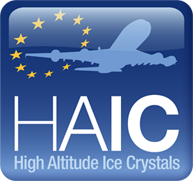 HAIC project progress and achievements were presented during the M18 Mid-Year review meeting which took place on the 21st of January 2014 in Luton, UK. Key TRL 3 was reached for detection & awareness technologies and international field campaign preparation had been completed. The HAIC/HIWC (High Ice Water Content - Project led by NASA) international field campaign, is to provide the first modern extensive data set of the core areas of deep convection that can be safely penetrated. This campaign took place in Darwin, Australia, from the 15th of January 2014 till the 7th of March 2014. Many data were collected, which are currently post-treated and analyzed, and will consolidate the existing knowledge of atmospheric icing environment. For more information visit the
HAIC project progress and achievements were presented during the M18 Mid-Year review meeting which took place on the 21st of January 2014 in Luton, UK. Key TRL 3 was reached for detection & awareness technologies and international field campaign preparation had been completed. The HAIC/HIWC (High Ice Water Content - Project led by NASA) international field campaign, is to provide the first modern extensive data set of the core areas of deep convection that can be safely penetrated. This campaign took place in Darwin, Australia, from the 15th of January 2014 till the 7th of March 2014. Many data were collected, which are currently post-treated and analyzed, and will consolidate the existing knowledge of atmospheric icing environment. For more information visit the 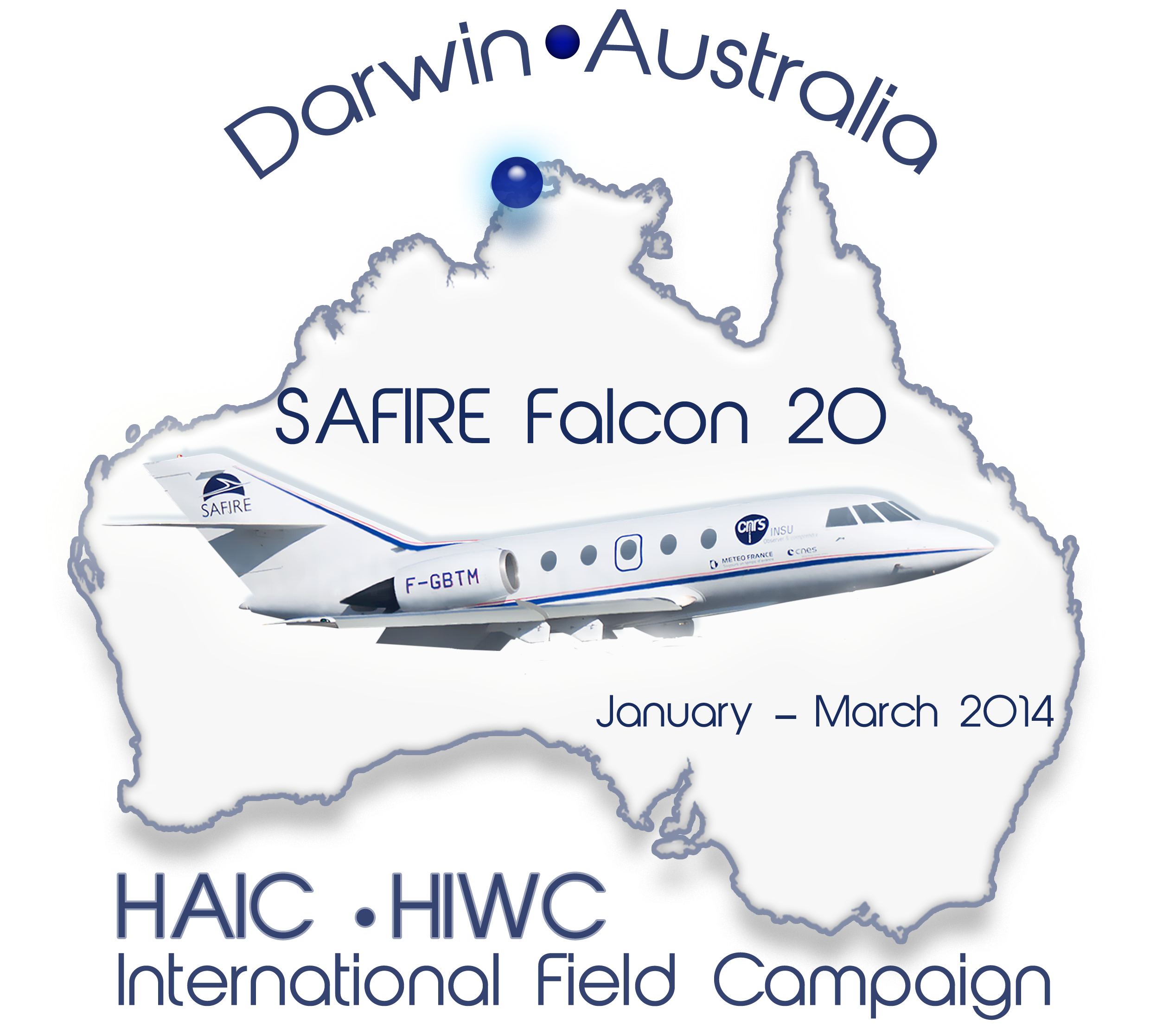
 Following the transition into the new year, SARISTU completed major milestones in particular on its Smart Integration activities. Among these are the successful completion of the three Fuselage related Preliminary Design Reviews and two Wing related ones. Perhaps even more significantly, first metal cut and first tape laid was achieved on both Fuselage and Wing Demonstrators. On the Application Scenarios, the 30 month reviews focusing in particular on the results of the extensive test series and preparation of the demonstrators are nearing completion. Overall progress is meeting expectations as highlighted by the 94 publications and dissemination activities already performed by the consortium partners from the beginning of the project. For more information visit the
Following the transition into the new year, SARISTU completed major milestones in particular on its Smart Integration activities. Among these are the successful completion of the three Fuselage related Preliminary Design Reviews and two Wing related ones. Perhaps even more significantly, first metal cut and first tape laid was achieved on both Fuselage and Wing Demonstrators. On the Application Scenarios, the 30 month reviews focusing in particular on the results of the extensive test series and preparation of the demonstrators are nearing completion. Overall progress is meeting expectations as highlighted by the 94 publications and dissemination activities already performed by the consortium partners from the beginning of the project. For more information visit the  Having completed its first year, the HIKARI project has successfully organized its 2nd HIKARI Workshop, partially open to external companies, universities and governmental authorities. The workshop was hosted by JAXA in Tokyo, Japan from 17th to 20th March 2014. The workshop was focused on demonstrating the added value of International Collaboration in the field of High Speed Research. More than 50 participants from Industry, Academia, EC and Japanese authorities had the unique chance to attend and share their views regarding the technological synergies that will enhance international cooperation, which is the key to the realization of High Speed Transport (HST). In this way, HST will become a feasible scenario in our future's daily life, allowing us to fly from Paris to Tokyo in less than three hours! For more information visit the
Having completed its first year, the HIKARI project has successfully organized its 2nd HIKARI Workshop, partially open to external companies, universities and governmental authorities. The workshop was hosted by JAXA in Tokyo, Japan from 17th to 20th March 2014. The workshop was focused on demonstrating the added value of International Collaboration in the field of High Speed Research. More than 50 participants from Industry, Academia, EC and Japanese authorities had the unique chance to attend and share their views regarding the technological synergies that will enhance international cooperation, which is the key to the realization of High Speed Transport (HST). In this way, HST will become a feasible scenario in our future's daily life, allowing us to fly from Paris to Tokyo in less than three hours! For more information visit the 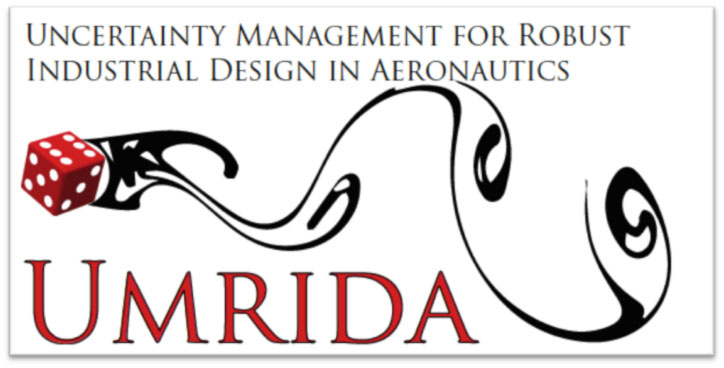 The first
The first  The HERMES project is reaching its final stages and its main output, a portal to facilitate to access transport research information from worldwide databases is now live:
The HERMES project is reaching its final stages and its main output, a portal to facilitate to access transport research information from worldwide databases is now live: 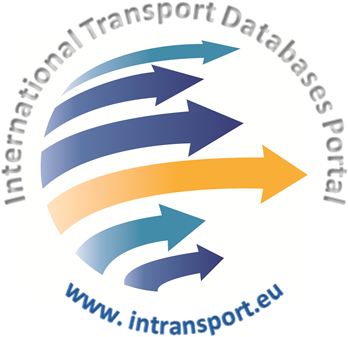
 The Irish Centre for Composites Research (IComp) at the University of Limerick in Ireland began a long-term project by investing in an Automated Tape Placement (ATP) high-spec robot. This state-of-the-art, laser powered, robot which has been installed at the University of Limerick is unique on the island and one of less than 7 known to be in European technology centres. IComp has the necessary scientific and engineering expertise to drive this technology forward, to provide a leading edge position in the robotic manufacture of composite parts across a range of sectors including aircraft manufacturing, space launch vehicles and diverse industrial sectors such as renewable energy, off-shore oil and gas and high-end automotive.
The Irish Centre for Composites Research (IComp) at the University of Limerick in Ireland began a long-term project by investing in an Automated Tape Placement (ATP) high-spec robot. This state-of-the-art, laser powered, robot which has been installed at the University of Limerick is unique on the island and one of less than 7 known to be in European technology centres. IComp has the necessary scientific and engineering expertise to drive this technology forward, to provide a leading edge position in the robotic manufacture of composite parts across a range of sectors including aircraft manufacturing, space launch vehicles and diverse industrial sectors such as renewable energy, off-shore oil and gas and high-end automotive.
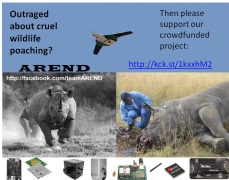 A team of undergraduate and graduate students from 4 Universities (Colorado, Helsinki, Stuttgart, Pretoria) collaborate on a project to develop a sensor aircraft that should provide intelligence data about poaching activities in Kruger National Park. We seek companies who want to promote their sensors and companies who want to support students with travel funds.
A team of undergraduate and graduate students from 4 Universities (Colorado, Helsinki, Stuttgart, Pretoria) collaborate on a project to develop a sensor aircraft that should provide intelligence data about poaching activities in Kruger National Park. We seek companies who want to promote their sensors and companies who want to support students with travel funds. The SAFEJOINT project addresses the problem of dissimilar material joining through a number of innovative techniques to achieve a step improvement in the performance of dissimilar material joints. Those activities are accompanied with the development of non-destructive inspection techniques for through life integrity assessment. A workshop showcasing the project will be held in of July 3rd -4th, 2014 in Athens. Attendance to the workshop is open to all and free of charge. Industry participation is strongly encouraged. For more information please visit:
The SAFEJOINT project addresses the problem of dissimilar material joining through a number of innovative techniques to achieve a step improvement in the performance of dissimilar material joints. Those activities are accompanied with the development of non-destructive inspection techniques for through life integrity assessment. A workshop showcasing the project will be held in of July 3rd -4th, 2014 in Athens. Attendance to the workshop is open to all and free of charge. Industry participation is strongly encouraged. For more information please visit: 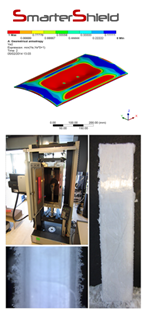 Development of In-flight Ice Protection System for Aircrafts at LEITAT Technological Center in collaboration with TR Composites for ZODIAC AEROSPACE (CLEANSKY JTI Project: SMARTERSHIELD)
Development of In-flight Ice Protection System for Aircrafts at LEITAT Technological Center in collaboration with TR Composites for ZODIAC AEROSPACE (CLEANSKY JTI Project: SMARTERSHIELD)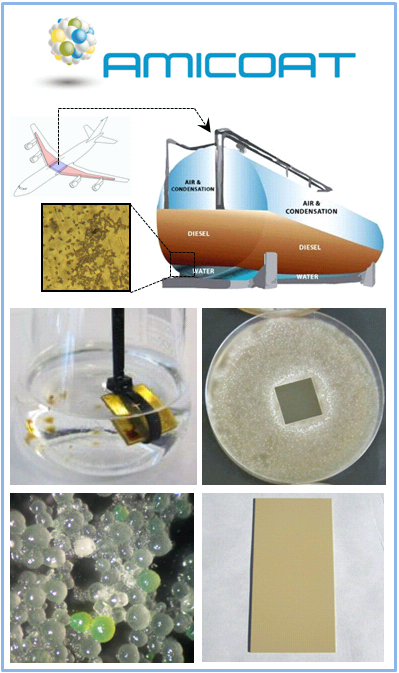
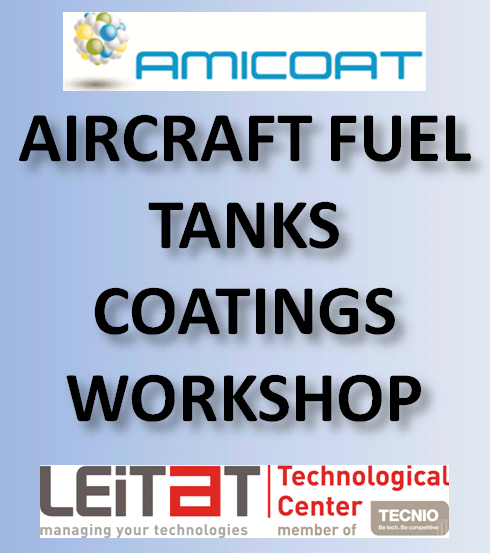

 The FP7 Collaborative
The FP7 Collaborative 